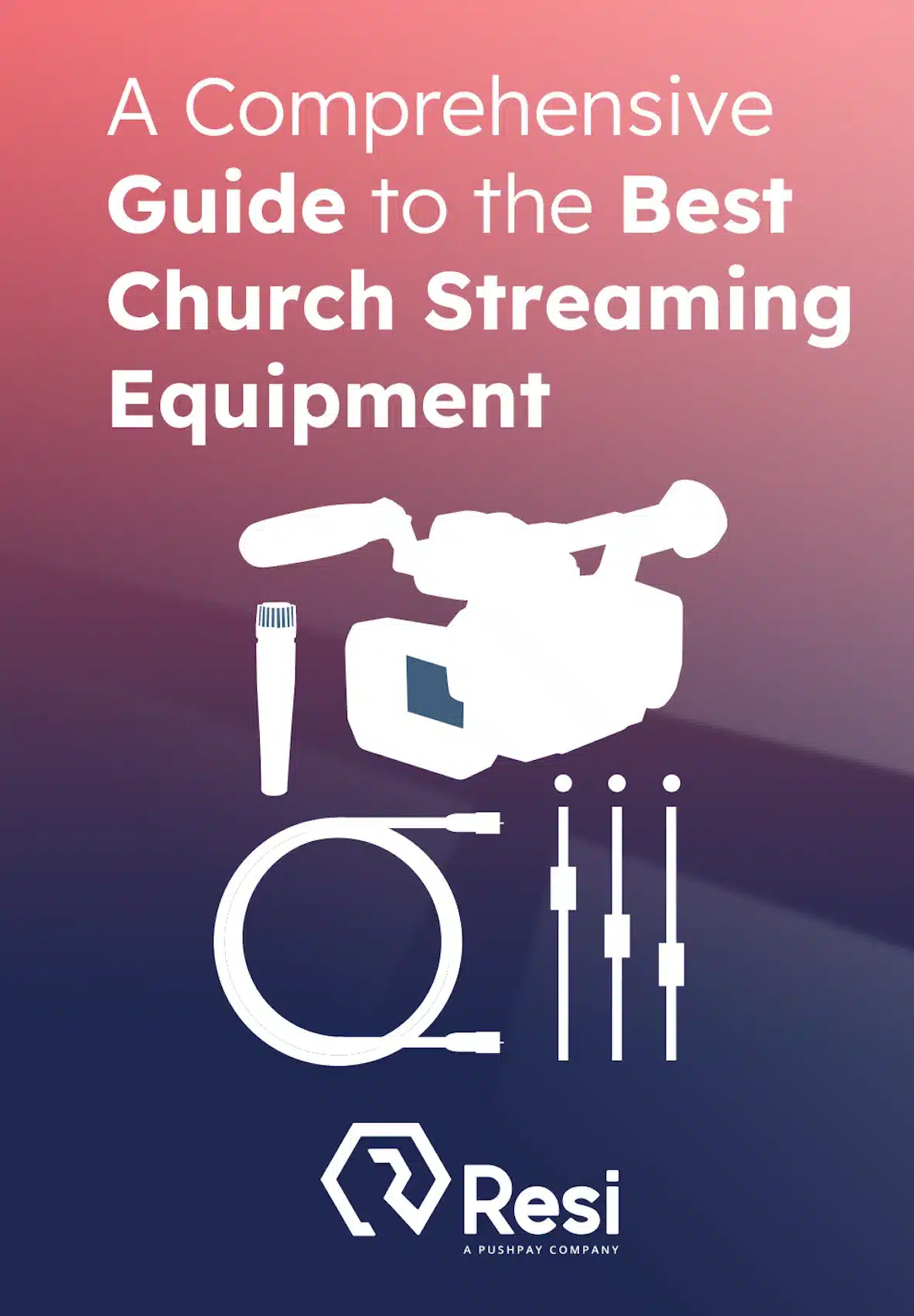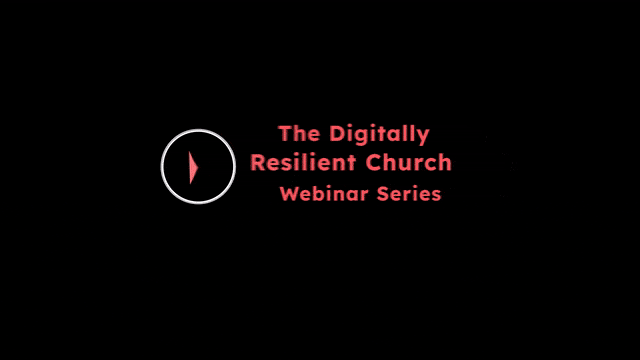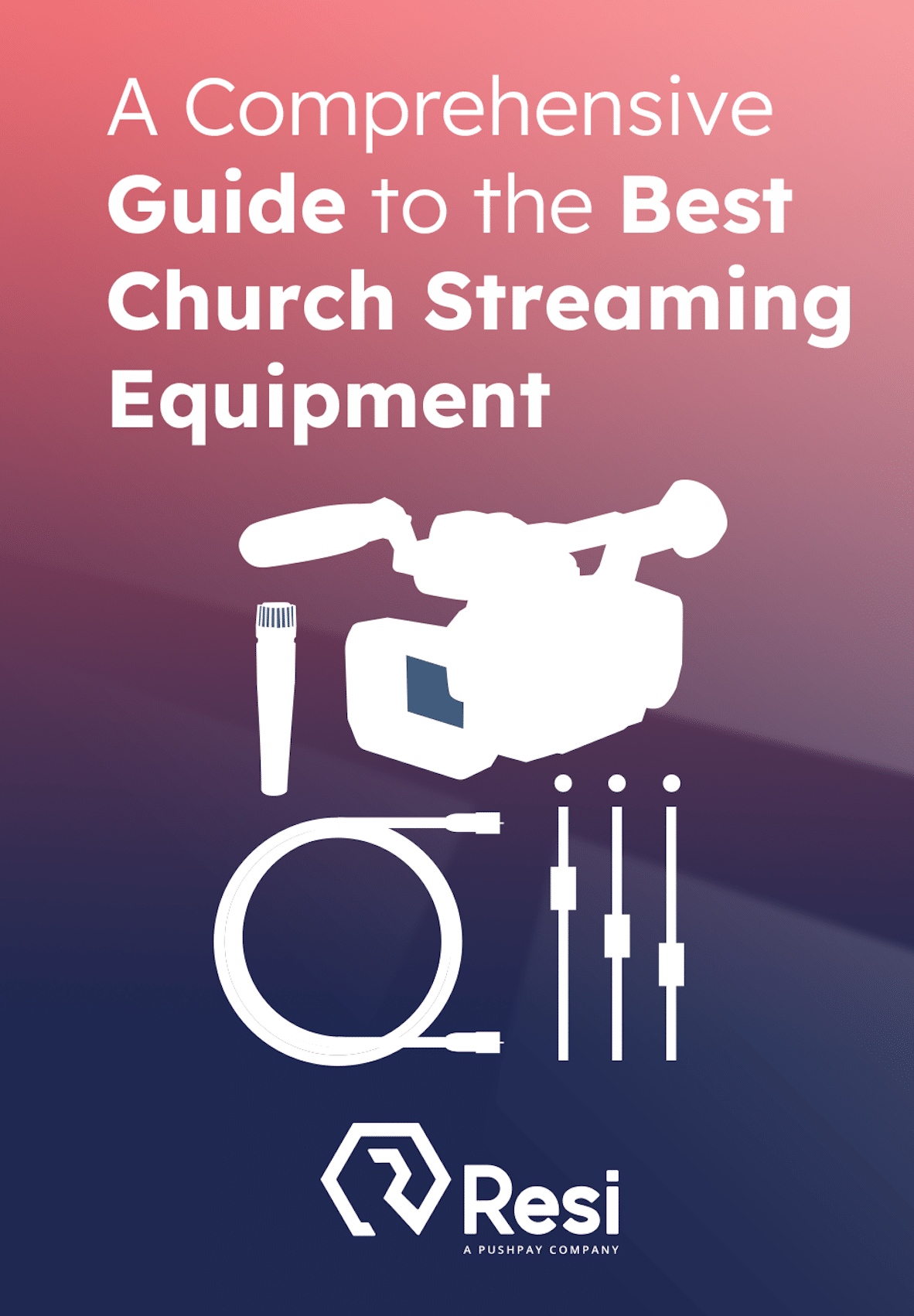
Connecting with your audience means showing up where they already spend their time. And let’s be real—it’s not just one place anymore. Think Facebook, YouTube, your church’s website, and more. Live streaming across multiple platforms isn’t just a trend—it’s a smart way to reach more people and keep them engaged.
Of course, managing streams on different platforms can seem like a high-wire balancing act. How do you keep your stream’s quality high no matter where it’s watched? How do you stay connected with viewers everywhere without burning out? In this blog, we’ll dig into the common challenges of multi-platform streaming and give you the know-how to make it all run smoothly.
Best Livestreaming Equipment
Discover what top-rated equipment we recommend adding to your church streaming toolkit.
Download for free!
Benefits of Multi-Platform Streaming for Churches
Reaching a Broader Audience
Imagine extending your church’s message well beyond the walls of your local community. Streaming across multiple platforms lets you connect with people who may not attend in person, including remote members and those exploring faith communities online. Casting a wider net like this allows your church to reach more people and create a welcoming, inclusive community.
Engaging Different Demographics
Every platform has its own unique audience, and using multiple channels lets you connect with different age groups and interests. Whether it’s tech-savvy young adults on YouTube, families on Facebook, or dedicated members on your church’s website, streaming across platforms helps your message resonate with everyone. Meeting people where they are strengthens the sense of community and belonging.
Enhancing Accessibility
In today’s fast-paced world, accessibility is everything. Offering your services on multiple platforms allows people to tune in on their own terms. Some may prefer the live experience on Facebook, while others might choose YouTube for its easy replay options. This flexibility reaches more people and ensures no one misses the connection and support they’re looking for. Going multi-platform is like opening the church doors wider than ever.
Preparing for Multi-Platform Streaming
Understanding Platform Requirements and Capabilities
Before jumping into multi-platform streaming, it’s essential to get a handle on what each platform offers and what it requires. Platforms like YouTube and Facebook each have unique technical specs and features. YouTube, for example, is known for high video quality, which works well for visually rich services, while Facebook’s interactive live chat can boost real-time engagement. Take a close look at these differences to see which platforms best align with your church’s streaming goals.
Choosing the Right Streaming Software and Hardware
The success of multi-platform streaming often depends on the right software and hardware. Choose streaming software and encoders that can handle multiple platforms at once, without sacrificing quality. It’s important to find options with easy-to-use interfaces and solid customer support to help you navigate any technical issues. With reliable equipment in place, you’ll be able to keep your broadcast consistent across all platforms, ensuring an enjoyable experience for your viewers.
Setting Up Accounts and Testing Connections
Once you have your platforms and tools set, set up accounts on each platform you’ll be streaming to and link them to your streaming software. This step involves entering stream keys and adjusting settings to match each platform’s requirements. Be sure to test everything thoroughly before going live. Running trial streams can help you spot any lag or quality issues so you can make adjustments as needed. Testing ahead of time ensures that, when it’s showtime, your service streams smoothly and your viewers have a seamless experience.
Best Practices for Streaming on Multiple Platforms
Keeping Quality Consistent Across Platforms
Consistent video and audio quality across all platforms is key to a smooth, professional live stream. Viewers expect a certain level of quality, and technical issues can easily pull them out of the moment. To ensure a high standard, get familiar with the ideal settings for each platform. Adjust resolution, frame rate, and audio bitrate to match each service’s recommendations, and test your streams regularly to catch any issues. This way, your audience can stay focused on your message, not technical hiccups.
Optimizing Resolutions and Bitrate
Buffering and drops in quality are frustrating for viewers, but with some fine-tuning, they’re largely avoidable. Since each platform has its own standards for resolution and bitrate, tailor your settings for each one. For platforms with limited bandwidth, use lower resolutions to keep the stream running smoothly, while maximizing quality on platforms that support higher resolutions. Striking this balance gives your audience a consistent viewing experience they’ll enjoy from start to finish.
Engaging Viewers on Each Platform
Engagement is at the heart of any good live stream, so make an effort to connect with viewers on each platform. Use live chat to answer questions and respond to comments, creating an interactive experience. Ask questions, run polls, and invite viewers to share their thoughts—these are great ways to keep them involved. Encouraging actions like subscribing or sharing can also help build your community and widen your reach. By making your viewers feel seen and heard, you’re creating a welcoming space that keeps them coming back.
Overcoming Common Multi-Platform Streaming Challenges
Managing Bandwidth and Internet Stability
One of the toughest parts of multi-platform streaming is to ensure your bandwidth can handle multiple streams simultaneously without interruptions. To keep things running smoothly, it’s important to understand each platform’s bandwidth needs. A strong internet connection is crucial—consider upgrading to a higher speed or using a wired connection over Wi-Fi to reduce interference. Running a speed test before going live helps spot any issues, giving you a chance to fix them ahead of time. These small steps can help keep your stream steady and your audience engaged.
Avoiding Latency and Sync Issues
Latency and sync problems can disrupt your stream, leaving viewers feeling lost and disengaged. To avoid this, ensure your streaming software is set up to reduce delays, and keep an eye on audio and video sync as you go. Adjust buffer settings and use low-latency modes on your platforms to minimize delay. Investing in quality microphones and cameras that sync well also makes a big difference. With regular testing and small adjustments, you can keep your streams smooth and synchronized, giving viewers a more seamless experience.
Handling Platform-Specific Limitations
Each streaming platform has its own quirks and limits. For example, Facebook may have resolution caps that can impact your stream quality. To navigate these, get familiar with each platform’s specs and consider adaptive bitrate streaming, which adjusts quality based on each viewer’s internet connection. By understanding these platform-specific limitations, you’ll be able to provide a consistent, high-quality stream that meets viewers’ expectations, no matter where they’re watching.
Best Livestreaming Equipment
Discover what top-rated equipment we recommend adding to your church streaming toolkit.
Download for free!
How Resi Makes Multi-Platform Streaming Easy and Reliable
Resi’s Multi-Site and Multi-Platform Streaming Capabilities
Imagine sharing your church services across multiple platforms and locations, seamlessly and without any drop in quality. That’s what Resi brings to the table. With Resi’s technology, churches can reach larger audiences by streaming to multiple sites simultaneously, meaning everyone—wherever they are—recieves the same high-quality experience. Whether you’re streaming to YouTube, Facebook, or your church’s website, Resi’s tools make sure your message comes through clearly on every channel.
Reliable Streaming Protocol (RSP) for Buffer-Free Streaming
Buffering and interruptions can derail any live stream, but with Resi’s Reliable Streaming Protocol (RSP), those headaches are kept at bay. RSP is built for high-demand streaming, helping prevent buffering and keeping the stream smooth and uninterrupted. It adapts to changing internet conditions, giving you a stable, reliable stream that keeps viewers engaged, even if your network is under pressure.
Automated Scheduling and Simulcasting Made Simple
Handling multiple streams doesn’t have to be overwhelming—Resi’s automated scheduling and simulcasting make it easy. These features allow you to set up and manage broadcasts on different platforms with minimal hands-on effort. Schedule your streams in advance, so they go live on time without needing to constantly monitor them. And with simulcasting, you can broadcast to multiple platforms from a single source, simplifying the process so you can focus more on your message, not the tech. With Resi, multi-platform streaming becomes a smooth and efficient part of your church’s outreach.
Tips for Tracking Engagement and Analytics Across Platforms
Using Analytics to Measure Success
In today’s digital world, understanding your audience and how they engage with your content is
essential. With platform analytics, churches can get valuable insights into viewership, engagement, and reach on each platform. These tools show how many people tune in, how long they stay engaged, and which moments grab the most attention. Regularly reviewing this data helps you see what’s working and where you can improve, making sure your message connects with as many people as possible.
Gathering Feedback from Viewers
While analytics give you numbers, feedback from viewers adds context. Encouraging viewers to share their thoughts in comments, surveys, or messages helps you understand their preferences and expectations. You can even ask questions or create polls during your live streams to spark engagement and gather insights. This feedback loop not only builds a stronger connection with your audience, but also helps you see what’s working and what could be improved. By listening to your viewers, you can shape future streams to meet their needs and create a better experience for them.
Adjusting Strategy Based on Data
Once you have data and feedback, the next step is to use it. Analytics should guide your streaming strategy, helping you decide which platforms to focus on and where to allocate resources. If certain platforms show higher engagement, consider putting more effort there, while lower-performing platforms might need a different approach. By regularly analyzing trends and adjusting your strategy, you ensure your streaming efforts are effective and meaningful, maximizing your reach and engagement across all platforms.
Best Livestreaming Equipment
Discover what top-rated equipment we recommend adding to your church streaming toolkit.
Download for free!
Maintaining Consistency and Brand Identity Across Platforms
Creating Consistent Graphics and Overlays
A strong brand identity helps make your streams look polished and instantly recognizable. Start by creating branded graphics and overlays that reflect your church’s colors, logos, and fonts. Use these elements consistently across all platforms to keep a unified look. Whether you’re streaming on YouTube, Facebook, or your website, having a standard set of graphics and overlays helps your streams stand out and builds trust with your audience.
Standardizing Messaging and Calls to Action
Just as visual consistency is important, so is a consistent message. Craft standard calls to action—whether for donations, event sign-ups, or ministry engagement—so viewers get the same information no matter where they’re watching. This approach strengthens your church’s goals and fosters a sense of reliability. By keeping your messaging aligned across platforms, you can encourage more engagement and support for your initiatives.
Synchronizing Start Times and Announcements
For a seamless experience, ensure your streams start simultaneously and have consistent announcements across platforms. This synchronization helps viewers feel included and connected, no matter where they’re tuning in from. Coordinated countdowns and announcements build anticipation and help ensure everything kicks off smoothly.
Conclusion
Streaming across multiple platforms can greatly expand your reach and bring together a diverse audience. By keeping your branding, messaging, and timing consistent, your church can offer a polished and impactful live stream experience. These practices not only strengthen your online presence, but also reinforce your community’s identity and message.
Consider using Resi’s multi-platform streaming solutions to ensure reliable, high-quality broadcasts. With Resi, your church can focus on what really matters—connecting with people and sharing your message.







